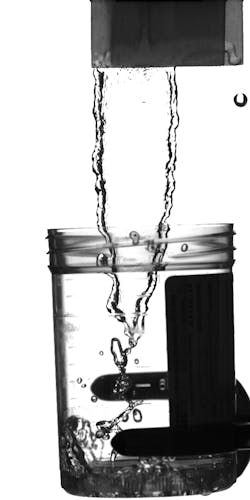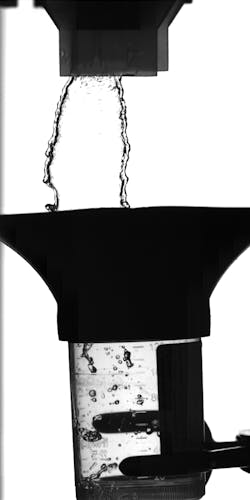Contrary to what you may think, there are both physical and psychological “challenges” involved with urination. For patients, urinating into a specimen cup is a medical necessity for monitoring health issues, however, it’s often undesirable. Thanks to the female anatomy, urinating into a cup is physically awkward, often ending in a wet aftermath and embarrassment. This is especially true for handicapped women.
Dr. Faith Leibman, a U.S. Navy and Army Veteran, has heard this complaint frequently while working with disabled veterans. “I had been to the VA’s women’s health center a few times and noticed that the design of urine collection cups was not adapted to women, so I looked for a solution to the problem and came up with this funnel-shaped device. The women at the VA have absolutely influenced my direction when making this product.” said Leibman.
Disabled veterans require more doctor visits, and consequently, more urine samples. A quick search shows that nearly 41 million women in the United States have a disability. Twenty-five percent of those women are over the age of 65 and living with a disability.1
Leibman is attempting to improve the urine sampling experience through a feminine accessory for urine specimen cups with a petal-like funnel shape at the top. The product was recently approved for its design patent, and she hopes to begin production once the final design and utility patent are approved. Thanks to the Splash Lab, the future is in sight.
Established in 2010, the Splash Lab at Utah State University seeks to unravel the physical mechanisms of fluid behaviors through a novel 3D volumetric measurement method known as Synthetic Aperture Imaging and imbedded instrumentation (e.g., accelerometers, etc). They experimentally analyze fluid systems such as fluid-structure interactions, multi-phase flows, and free surface phenomena. They have been funded by the Office of Naval Research and the National Science Foundation for other work.
The Splash Lab research team decided to focus their experimental work on determining the main splash back issues associated with urine sample collection and where the mess emanates from. While many studies have looked at how the jet infringes on a surface, few have considered the exit of fluid. Even fewer studies have looked at women and urination.
As such, a model was developed that included a water reservoir with a tube attached to an anatomically correct, 3D printed female urethra which impinged on two artificial labia. The labia were made from a soft material injected into a 3D mold of a typical female labia. It was assumed that the two labia were identical.
The intent of the experiment was to characterize the behavior between the jet and a soft polymer. It was challenging to simulate the interaction between the urine stream and the simulated labia, as this external feature varies greatly between women. We found that as the simulated labia was pushed further into the stream, the urine became a liquid sheet, causing a mess.
The physics of female urination after the urine stream leaves the body is not officially documented. However, it was discovered that women can urinate without the labia interfering with the stream, or the stream can interact with either one, or both of the labia. Obviously, when a stream interacts with a surface like the labia, it increases the possibility of splashing.
Current urine sample cup sizes are close to, or completely insufficient to capture the entire splash event. Leibman’s patented device, called the Orchid, is a funnel type device that attaches directly to the rim of the urine sample cup. (Figure 1a) It has a much larger area at the top, which is more than sufficient to capture even the worst-case splashes. The device is more than two times larger than a urine sample cup (Figure 1b) and allows women to partially seal the device with their legs to minimize splash back.
Figure 1. A typical urine sample cup (50 mm diameter) and b) the Orchid device attached to a urine sample cup.
Understanding interactions between fluid and soft structures could improve the overall experience of providing urine samples. This research could have wider implications beyond the Orchid device says Todd Truscott, PhD, Associate Professor of the Department of Mechanical and Aerospace Engineering at Utah State University. “We could look at changing the overall design of things like clothing and toilets to make urinating less messy for both men and women. The research could also be applied to devices that assist women in urinating while standing up, something that could be particularly useful to women in the military.”
Luckily, the medical community is starting to improve upon the current option cups to improve the experience.
Acknowledgement
The Splash Lab wish to thank Dr. Faith Leibman for bringing this challenge to their attention and for many thoughtful conversations. They also gratefully acknowledge exploratory grant funding from Foxhole, LLC.
REFERENCE
1. Pew research. http://www.pewresearch.org/fact-tank/2017/07/27/7-facts-about-americans-with-disabilities/. July 27, 2017, Kristen Bialik.



